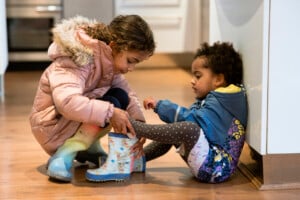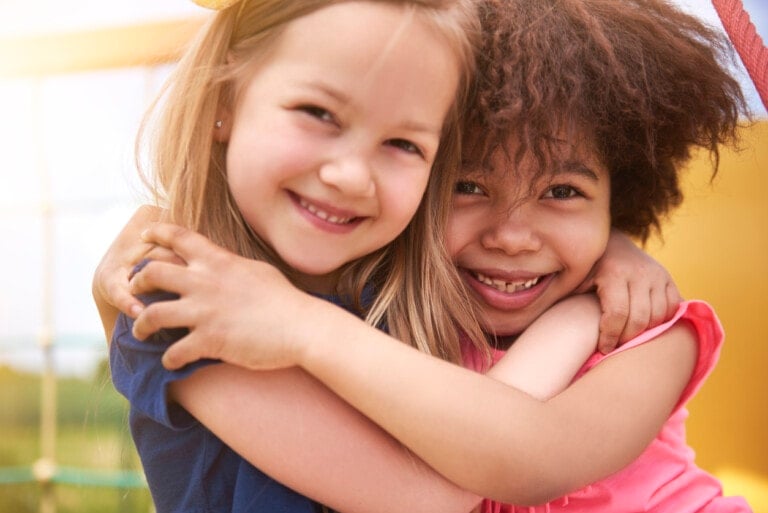Sometimes, our little people have big feelings. Children experience emotions before they have the words to name or describe the feeling. Emotional literacy is fundamental to our children’s development and can influence their well-being, future success, and relationships.1 Some children are naturally more capable of identifying and managing their emotions, but this skill is not something children are born with; it needs to be taught. All children need to have their emotional literacy nurtured and encouraged by their parents and other significant people. They must also learn to express themselves appropriately and be empowered to navigate the world around them.
What Is Emotional Literacy?
Emotional literacy is a person’s ability to identify, understand, and respond appropriately to feelings and emotions, both in ourselves and other people.2 Every day, we navigate many feelings, and every person experiences emotions differently or in response to different things. However, once we know how to identify feelings, we can use this information to help us constructively manage or cope with uncomfortable or strong feelings.
Why Is Identifying Emotions Important for Children?
We don’t know what feelings are and how to identify or cope with them when born. But as we grow, our emotional literacy develops and helps us “read” our and others’ emotions, which helps us better describe what we need or want. We can also understand and navigate other people’s emotions. Some key benefits of being able to understand and manage emotions include:3,4
- Coping and regulating our emotions. Your child can only manage emotions when they understand them and why certain emotions were triggered, but also helpful and healthy ways of expressing or coping with those feelings.
- How we cope as children can often follow us into adulthood, so your child must learn to manage emotions early.
- When your child can cope with big feelings, they can behave more appropriately and are less likely to hurt themselves or others.
- Identifying their emotional needs and getting them met in assertive and healthy ways.
- They are better able to control their impulses.
- They are more likely to bounce back after adversity or challenges.
- Being able to empathize with others as we are more emotionally aware, which helps us manage socially and ensure we have strong, secure relationships as we can more easily connect with others
Teaching Children How To Identify Feelings

Your child’s emotional literacy and ability to understand and manage their feelings develop over time. Since our children experience emotions before they can describe them, they need significant support from their parents to help them develop the language skills to name their feelings. They will also need to take it a step further and learn strategies to help them cope with the feelings once they know what they are dealing with! Some strategies for building on emotional literacy include:5,6
1. Name It to Tame It
Imagine how uncomfortable, frustrating, or potentially frightening it would be to experience the sensations of an emotion without knowing what was going on. Especially uncomfortable sensations like sweating palms, a racing heart, and feeling warm or shaky. When your child is showing an emotion, if you can identify it and help them understand what they are feeling and why, it can reduce their frustration and fear. This is because they can better understand what is happening in their body and feel more in control. For example, you can tell them, “I can see you are frustrated because your sister won’t share her toys with you.”
In addition, when our kids know what they are feeling, they are better equipped to manage and handle it. For instance, we manage angry feelings in very different ways than sad feelings, so it’s helpful to know the specific emotion they need to address.
2. Name That Emotion
Label emotions you can see other people expressing. The more often you help your child make connections between situations and emotions, the more they can see feelings “in action” and have more knowledge. When they are better equipped to notice feelings and understand why they happen, they will become more compassionate and empathetic. For example, tell them, “Can you see that your sister is happy she won the running race?”
3. Give Them Words
Knowledge is power, they say, and that includes emotional literacy. So, the more words your child has, the better equipped they are to communicate and express their unique emotional experience. For example, are they frustrated or enraged? Flat or devastated? Having more words allows your child to express their full emotional range, which helps them match coping strategies effectively and ask someone to meet their needs appropriately. You could provide a list of emotions specifically for kids (child-friendly words that are developmentally appropriate or images to help them understand) or find a children’s emotion chart to help them decipher and understand their feelings.

4. Play Emotion Games
You might play a game of “guess that feeling,” where you make a face and see if they can guess your feelings. Or perhaps you could play emotions bingo (which is like regular bingo, except you print out pictures of faces expressing emotions and work on matching pairs). You could even read books or watch TV shows, have them guess emotions, and tell why the character(s) might feel that way.

5. Use Positive Role Modeling
Our children always watch and learn from what they see us do. So, let them see you naming your own emotion and then watch how you cope. You might say, “Gee, I’m feeling pretty frustrated. I need to take a nice calm breath.” Be a positive role model and show them what behavior you want to see in them.
6. Teach Them How To Cope
Emotional literacy is critical because it underpins emotional regulation. Not only should we teach our kids how to identify feelings, but we should also show how to manage them. Consider teaching calm breathing skills, jumping up and down (star jumps, bouncing on the trampoline), getting a cuddle, going for time in a quiet place, or other ways to regulate themselves. Effective coping strategies are unique to each person, so find out what works for you and your child.
Emotional intelligence and literacy are not things we automatically have skills in; they are things we must learn. All children need help and guidance to manage strong emotions. The lessons they learn as kids will stay with them throughout their lives, and emotional literacy will help your child navigate social situations, develop meaningful and strong relationships, and have generally positive well-being and life satisfaction. Teaching your child about their emotions is an invaluable investment in their future.































